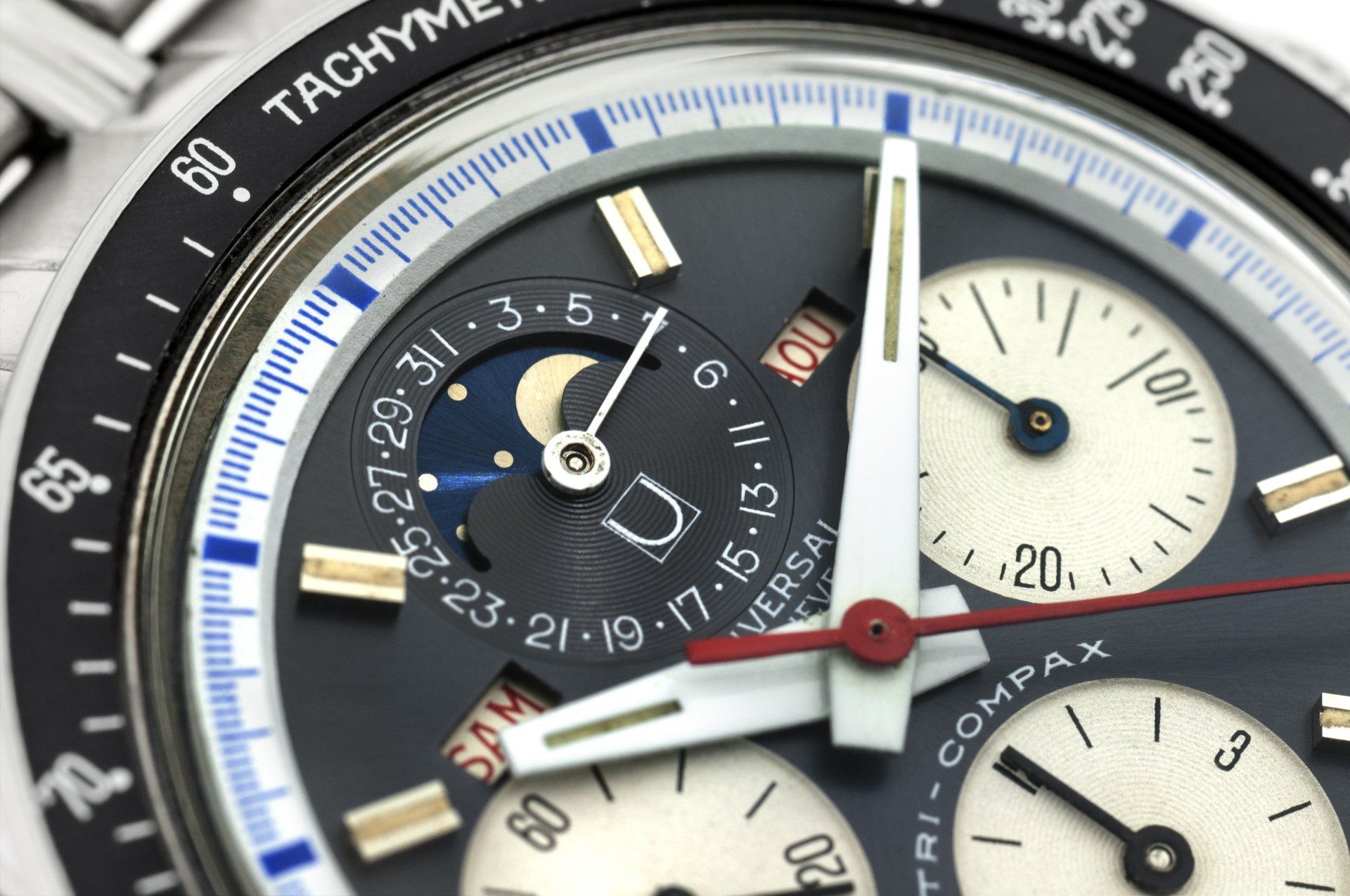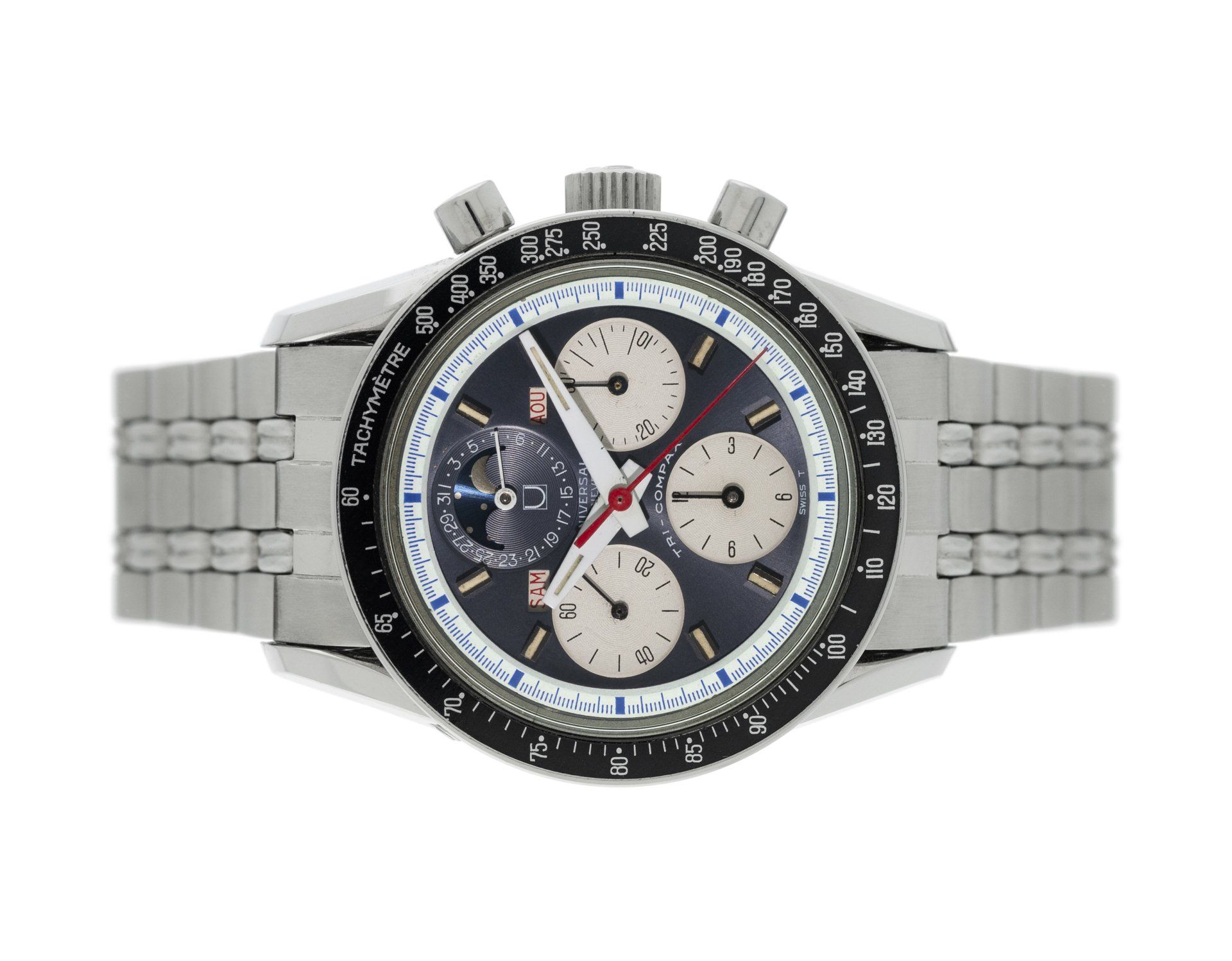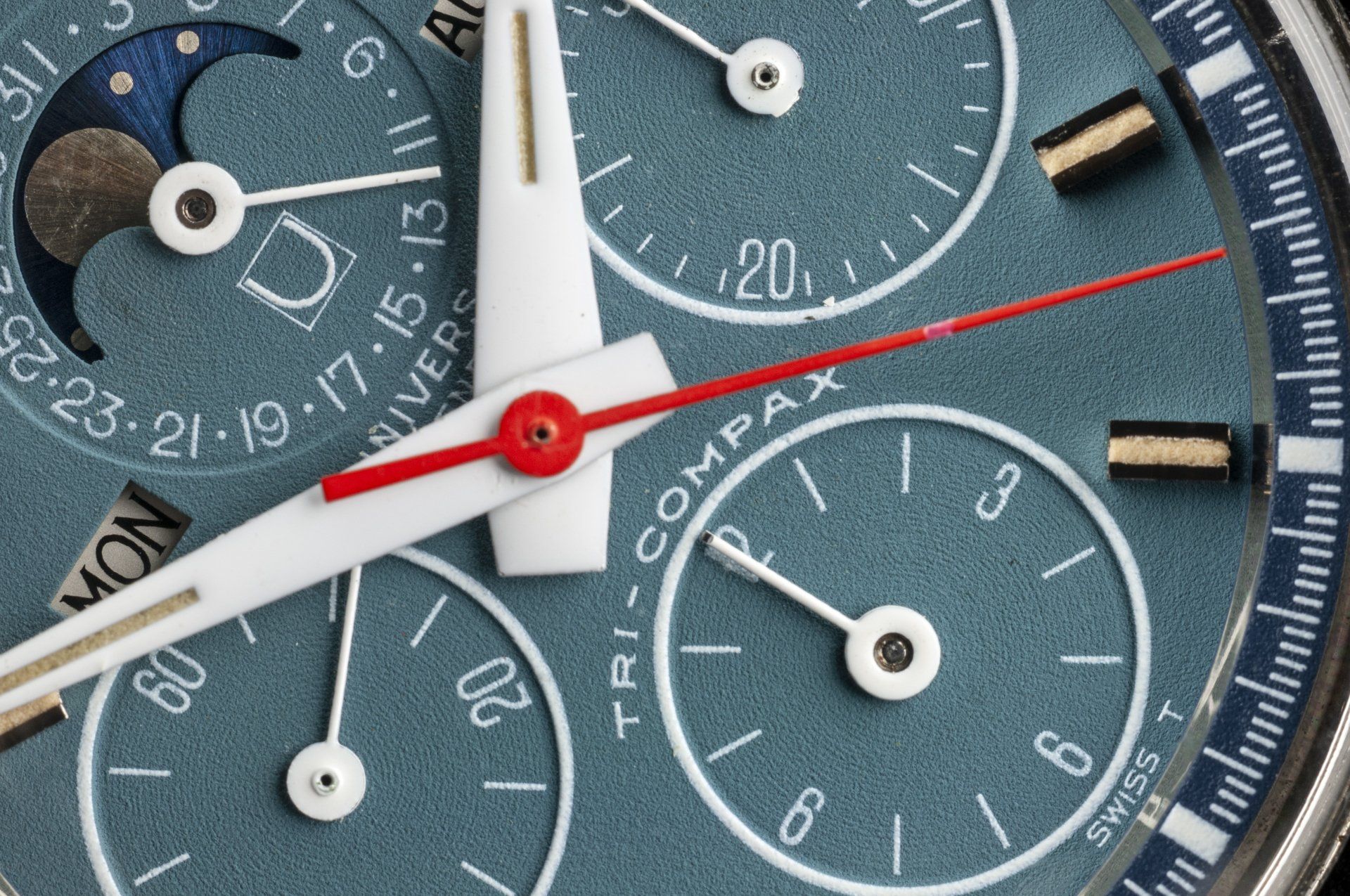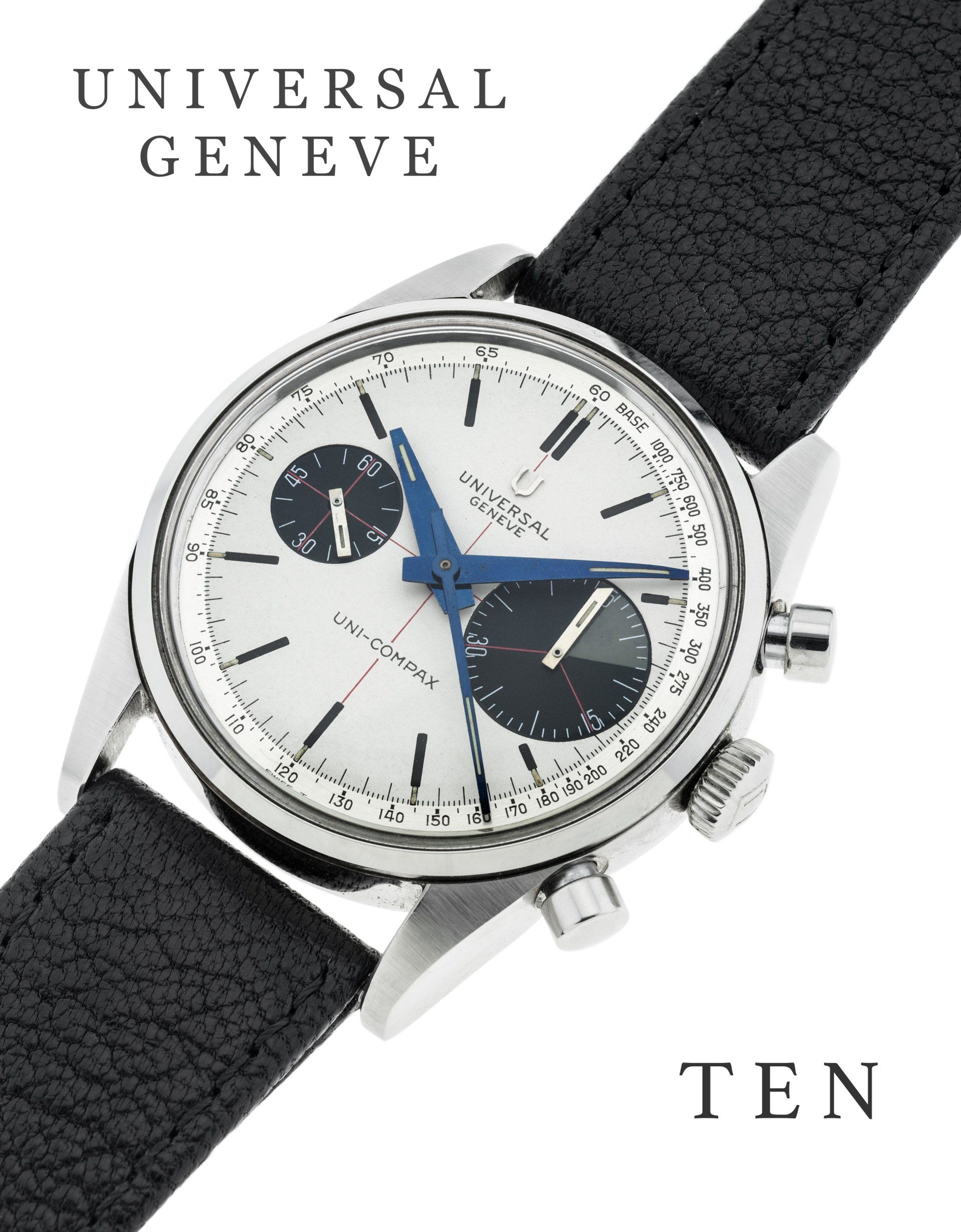The pinnacle of chronograph design in my opinion lies in the 1960s. Watches such as the Autavia 2446, Carrera 2447, Zenith A386 and the Rolex Daytonas are amongst my favourites. However all the watches I cover in the UG Ten book, and especially the UG Tri Compax Exotic pair, are up there in the conversation for the best chronographs of all time...
There is relatively little information out there about the Universal Geneve "Exotic" Tri Compax 881101/03 and 881101/04 pair. Universal Geneve catalogues and price lists from this period are thin on the ground, as are any meaningful archives from the original brand, with any available information lacking pictures or mention of the exotic pair, only the black and white dial /01 and /02 variants. We cannot even accurately say when this pair first appeared or when they ran until but our "best guess" would be the late 60s, into the early 1970s and certainly for only a very short period of time.
What is it that makes these Universal Geneves "exotic"? The term exotic is mainly referring to watches where the outer dial edge is contrasting to the remainder of the dial, and of course it is best known for applying to the Rolex Daytona Paul Newman dials. This period at the end of the 1960s saw Singer design various exotic dials for various manufacturers and they were no doubt influenced by the general changing of the design guard at this time. This new design ethos did not catch the publics attention at the time and both the Paul Newman Daytona and this pair of Tri Compax sold in very small numbers when launched, far fewer than their standard dial cousins at any rate. However, that lack of sales success has made this pair of watches very popular and highly collectible in the 21st century! You could argue the exotic dial designs were ahead of their time because today they are certainly more appreciated!
The term Tri Compax stands for triple complication - chronograph, date and moon phase - and it does not refer to three sub registers as some collectors assume. This series of watches are powered by the beautiful Universal Geneve signed Martel Calibre 281 movement, which features a Breguet hairspring, a movement whose origins date back to the 1930s. The 881101/03 features a metallic slate grey/blue "step" dial with a contrasting white minute track and the 881101/04 a very "exotic" teal dial with a contrasting royal blue track, with a mirror step. Both feature striking and unusual glossy white hour and minute hands, which really pop against these dials, and the red chronograph hand only adds to that aesthetic. The look is unique and one of the appealing features of this pair is that, in the crowded world of vintage watches, nothing else looks quite like them! Last but not least, the design is completed with a spectacular 36.5mm case, one that is beautifully balanced and sits perfectly on the wrist thanks to its 12mm depth. It's the perfect marriage of case, dial, and hand design that makes for the very best watches, if one area falls short, then it can be a matter of "nice face, shame about the legs".
Serial number research reveals how rare this special pair of chronographs are, with a serial allocation of circa 300 on the /03 and an even smaller 150-200 on the teal /04. So far, fewer than 30 of the slate /03 have been documented and fewer than 15 of the teal /04, making these some of the rarest desirable chronographs known to vintage watch collectors. Price wise they range between £10000-12000 for a poor example to perhaps as much as £35000+ for the best on a GF bracelet, with the rarer Teal dial the more valuable of the two. Not cheap then but, in comparison with many other very rare, beautiful, important chronographs in today's market, perhaps still very realistically valued. Even though Universal Geneve watches from this period are worth significantly more than they were ten years ago (as are all beautiful, desirable chronographs from this period), I still believe their following will grow and with such a small supply values seem unlikely to fall anytime soon.
Collectors should be wary of watches without correct serial and reference numbers on the back case, or ones that don't conform to the house style and have been re-engraved as they will always be less valuable/collectible. I have even known loose dials placed in cases and serial numbers being polished out to hide the fact that the original serial reference was for another dial. White hands would have been born on this pair and steel hands can potentially be another sign that the watch originally had a black or white dial to start with. Some steel hands have been painted white and sadly look a bit of a mess, as the thick white enamel paint can ripple, so look out for these factors when buying.
All of this data and much more appears in the the UG Ten book, to read more about the Universal Geneve Compax, Tri Compax and Uni Compax series of watches from the 1960s click on the link below...
Note: Please do not reproduce these images without permission.




